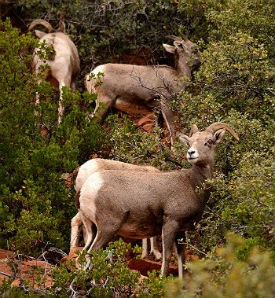
NPS photo Desert bighorn sheep are perfectly adapted to survive the hot, dry deserts they call home. Their bodies are smaller, legs longer, and coats shorter than their cousin the Rocky Mountain bighorn (Ovis canadensis canadensis). In the spring, bighorn can go many days without drinking water, metabolizing just enough moisture from the vegetation they eat. In dry times of the year, they drink more frequently, relying on water-filled potholes and springs to survive.
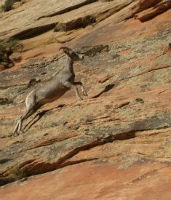
NPS Photo 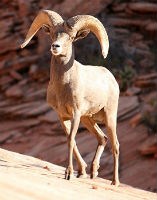
NPS Photo 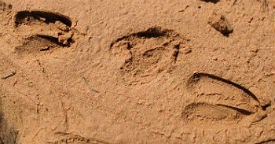
NPS photo
The National Park Service worked with the Utah Department of Wildlife Resources to restore 14 sheep back into the Zion wilderness by 1978. The reintroduction did not appear successful in the early years, but now the bighorn sheep herd has grown to over 500 animals in 2018. Bighorn have done so well in Zion that now wildlife biologists are concerned about the high population density. One major concern is that as bighorn spread out to new territory, they have a greater chance of contact with domestic sheep and goats, which can spread diseases fatal to wild bighorn. Park biologists and state wildlife officials are studying the issue to determine if actions need to be taken.
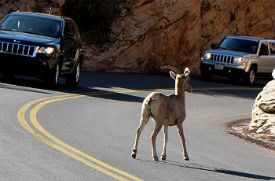
NPS Photo If you are trying to spot desert bighorn in Zion they may be walking across the road, posed atop majestic peaks, or relaxing in the shaded gullies of this slickrock sanctuary. Drive carefully, use roadside pullouts for viewing, and always maintain a safe distance from bighorn and other wildlife.
|
Last updated: November 25, 2019
